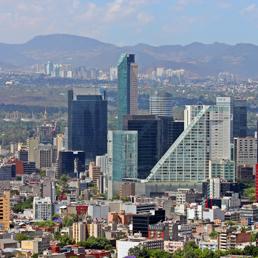Storia dell'articolo
Chiudi
Questo articolo è stato pubblicato il 18 novembre 2014 alle ore 20:48.

PRINCETON – When Mexico's then-President Carlos Salinas de Gortari and his American counterpart, Bill Clinton, signed the North American Free Trade Agreement (NAFTA) more than 20 years ago, the hope was that the Mexican economy would be swept forward by a rising wave of globalization. By many measures, that hope has been amply fulfilled.
Mexico's foreign-trade volume (exports plus imports) climbed steadily after NAFTA entered into force, roughly doubling, to more than 60% of GDP. Net foreign investment inflows relative to GDP tripled. Though Mexico is an oil exporter, its manufactured exports have led the way, as the economy has become ever more tightly integrated into North American supply chains. The automotive and steel industries, once inefficient and kept alive by protectionist trade barriers, are now highly productive and thriving.
Like so many other countries, Mexico was initially hit hard by Chinese competition in global markets, particularly after China became a member of the World Trade Organization at the end of 2001. Nonetheless, Mexico's proximity to the US market and its conservative monetary, fiscal, and labor-market policies have provided significant protection.
Dollar wages, moreover, have grown much more slowly than in China; As a result, labor is now some 20% cheaper in Mexico in relative terms. Taking productivity trends into account, unit labor costs have also risen less than in China and other major competitors, allowing Mexico to recover since the mid-2000s some of the market share it had previously lost.
The gains have come not only on the external front. Remarkably, Mexico's exceedingly high levels of inequality have begun to fall since 1994, thanks in large part to reforms in social policy and educational improvements.
Mexico's success shows up everywhere, except where it counts the most over the long term: overall productivity and economic growth. In both areas, there has been disappointment galore. Incredible as it may seem, average growth in total factor productivity (TFP) – a measure of the efficiency with which the economy's resources, human and physical, are used – has been negative since the early 1990s.
As a result, living standards in Mexico have fallen further behind the US and most emerging-market economies. Probably no other country in the world presents a starker contrast between external success and domestic failure.
What lies behind the apparent paradox is the phenomenon of “the two Mexicos,” the McKinsey Global Institute's evocative term for the extreme dualism that characterizes Mexico's economy. Large firms, oriented toward the global economy, have done quite well, whereas traditional, informal firms – exemplified by the ubiquitous neighborhood tortillerías – have performed poorly while continuing to absorb the bulk of the economy's work force. The successes of the former have been nullified by the drag exerted by the latter.
©RIPRODUZIONE RISERVATA
Permalink
Ultimi di sezione
-

Gli economisti
Perché preoccuparsi per la Francia?
di Paul Krugman
-

gli economisti
Krugman: il dibattito sull'austerity è politicizzato
di Paul Krugman
-
Italia
A Theory About European Naval Domination
di Paul Krugman
-

Italia
Una teoria sul predominio navale dell'Europa
di di Paul Krugman
-

IL PIANO JUNCKER
Gros: consumi prima che investimenti
di Daniel Gros










